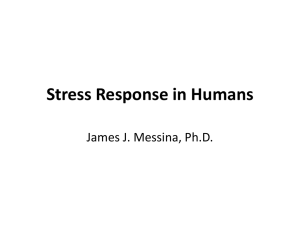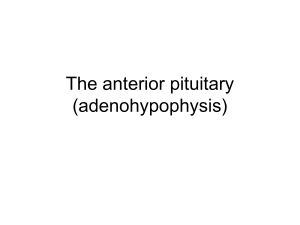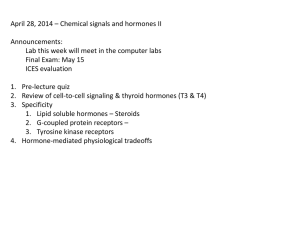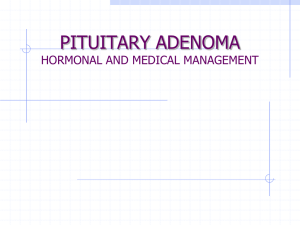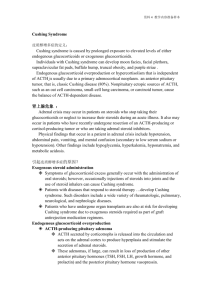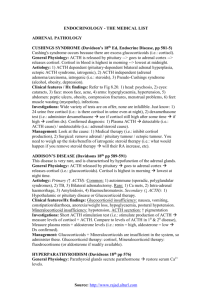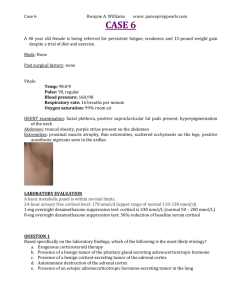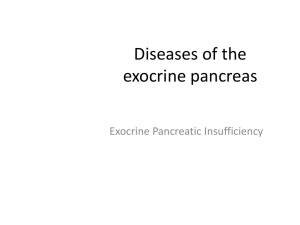A.C.T.H. - andoverhighanatomy
advertisement
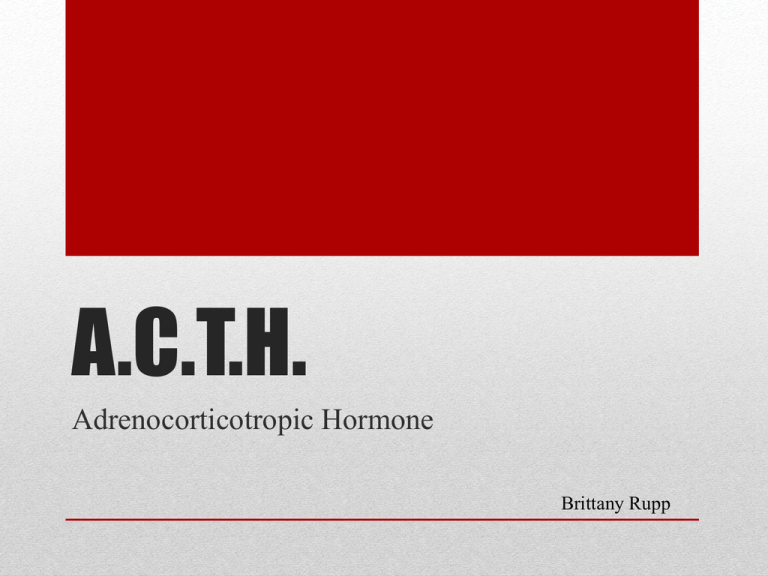
A.C.T.H. Adrenocorticotropic Hormone Brittany Rupp • ACTH is produced from the anterior lobe of the pituitary gland. • The target cells for ACTH are found in the adrenal cortex. • A corticotropin-releasing hormone (CRH) from the hypothalamus causes ACTH to be produced. What about it? ACTH is a polypeptide hormone that largely responds to stress. With this being the case, the release of it is more prominent during times of illness, injury, and disease. ACTH causes the release of cortisone, which allows you to handle stress. How does it work… In order to enter the target cell, CRH binds with the receptor protein, ACTH. By doing this the cell is informed to allow the protein to pass through. How does it enter? Too Little… Too Much… • Addison’s disease occurs when there is loo little ACTH in the blood. • Cushing’s disease is a result of too much ACTH in the blood. Hyperpigmentation Since ACTH levels vary so much throughout the day, only skilled endocrinologist can determine safe levels. How much is enough? Addison’s Disease Cushing’s Disease • ACTH can be synthetically replaced to treat Addison’s disease. This is done so through cortisone hormone replacement tablets (Cortef) or corticosteroid injections. • Through surgery, along with radiation therapy, part of the pituitary gland can be removed to treat Cushing’s disease. Drugs such as Nizoral can be used to treat excess ACTH. How to treat?

![Anti-ACTH antibody [AH26] ab76554 Product datasheet 1 Image Overview](http://s2.studylib.net/store/data/011958133_1-2fddf93bd1f9ebdfc4e3a5012697c672-300x300.png)
